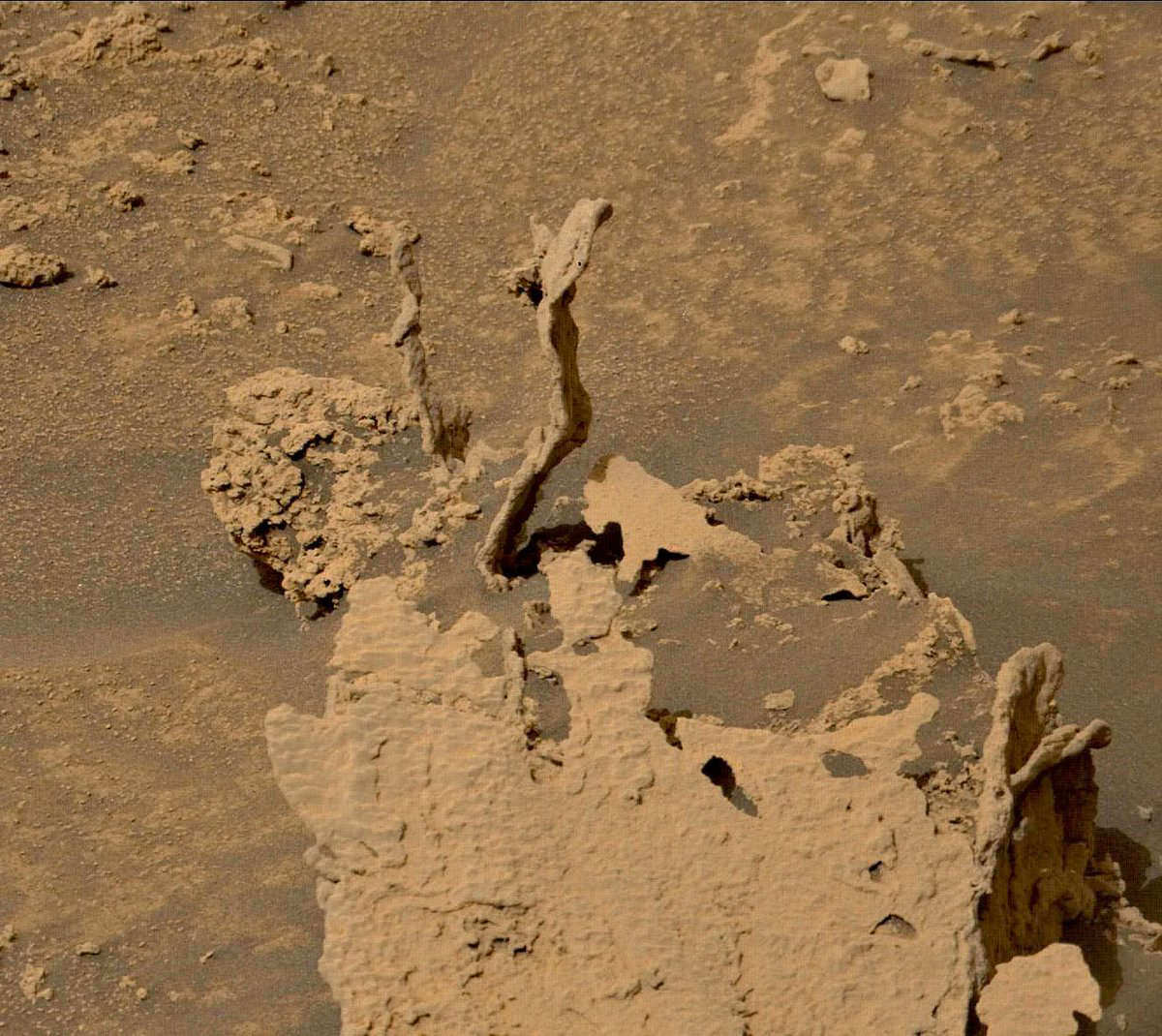The veteran NASA Curiosity rover photographed the curved stone pillars on the surface of the Red Planet. Curiosity captured the photo on May 15. The images were obtained on the 3474th Sol (Martian day) mission. Now Curiosity is nearing the end of its first decade of work on Mars, which will take place on August 6, 2022.

“Rock formations in the form of spikes are most likely “cemented” fillings of ancient cracks in sedimentary rock. The sedimentary rock is formed by layers of sand and water, but the rest of the rock is formed from softer material and was later destroyed by erosion,” explains the SETI Institute.
Weaker gravity on Mars could also affect the shape of the “spikes”. Recall that the Martian gravity is 1/3 of the Earth’s.
#PPOD: Here is another cool rock at Gale crater on Mars! The spikes are most likely the cemented fillings of ancient fractures in a sedimentary rock. The rest of the rock was made of softer material and was eroded away. ????: @NASA @NASAJPL @Caltech #MSSS fredk, acquired on May 17. pic.twitter.com/RGfjmRBfI7
— The SETI Institute (@SETIInstitute) May 26, 2022
Despite its long mission, Curiosity has a long-term plan to find habitable conditions in Gale Crater. It is now climbing Mount Sharp to look at the deposits in the environment. It was on this mountain that Curiosity found these bizarre rocks. It was expected that the rover would study the “interesting structures” of the first target, nicknamed “La Paragua” and conduct a multispectral analysis of the second target, called “San Pedro”, and then use a stereo image on an object called “Tapir”.
The Perseverance twin rover landed on February 18, 2021 to search for potential ancient microbes in the delta of an ancient river inside the Jezero crater. Perseverance plans to save several samples for a future mission to send to Earth in the 2030s.
Follow us on Twitter to get the most interesting space news in time
https://twitter.com/ust_magazine

